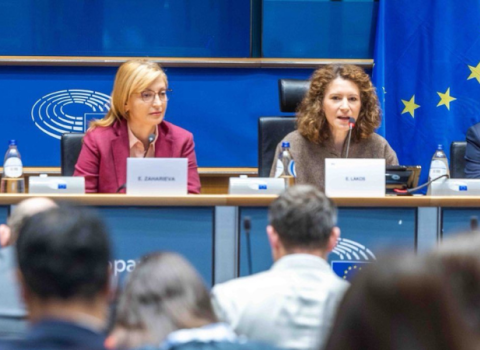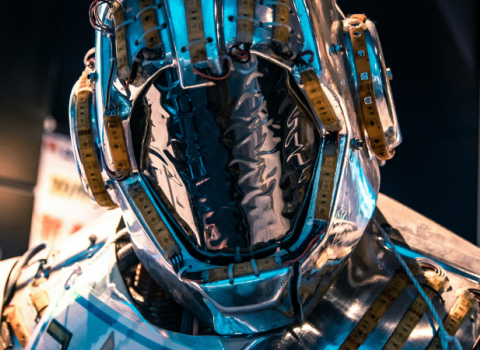The Commission has made a call for €200 billion of investment in smart energy grids, as academics and industry rallied round and announced plans for pan-European collaborations to support and develop new energy technologies that will underpin a single EU energy infrastructure and a single, self-sufficient energy market.
New, smart infrastructure is essential if the EU is to get any aspect of its energy strategy off the ground, said Günther Oettinger, Commissioner for Energy, setting out plans to build an integrated, intelligent energy supply network. “We need to make the policy goals for energy achievable through a strategy for developing an EU infrastructure,” he said.
It’s not only that most of Europe’s electricity and gas networks are too old to take advantage of modern technology like inbuilt intelligence, they are stuck behind outdated territorial boundaries which mean it is not possible to move electricity from France to Germany, or to ship gas held in storage in France and Germany to Eastern Europe when there are shortages, as occurred in January 2009 when the Russians shut down a pipeline.
“If we don’t make the leap to intelligent networks, we can’t give consumers power and open up energy markets to competition,” Oettinger said discussing the plans yesterday (17 November).
Evidence that the Commission is building momentum around its plans for a single, integrated and intelligent energy network came earlier in the week at the Strategic Energy Technology Plan (SET-PLAN) Conference in Brussels, where the European University Association (EUA) launched a new body representing almost 150 universities from across Europe with research and training capacity in the energy field, while leading utilities and technology companies unveiled the Smart Energy Demand Coalition (SEDC) to promote technologies related to demand response, energy efficiency, smart meters and smart grids.
Addressing the SET-PLAN Conference on behalf of the EUA, Torbjørn Digernes, Rector of the Norwegian University of Science and Technology, said the main task of the EUA body is to provide a strong single voice for Europe’s universities in EU energy research. “For the successful realisation of EU energy policy goals, European universities’ strengths in fundamental research and training capacity for new skills development required by the energy sector must be tapped through EU research strategies.” Digernes said.
Balancing consumption with generation
Meanwhile, the SEDC, a not-for-profit industry association, said it will share expertise and information with industry participants, regulators and policymakers, media and consumer associations on the deployment of smart meters and communications systems, enabling energy providers to offer their customers time-based rates with off-peak discounts.
The association will be led by Executive Director Jessica Stromback, currently a Senior Partner at VaasaETT, an energy think tank. “Regulators across Europe are presently debating and finalising requirements for smart meter and smart grid deployments, including the platforms on which demand response and energy efficiency programmes will be built, helping influence the ability of electricity customers to contribute to the advancement of the EU's aggressive 2020 climate change objectives,” Stromback said.
Balancing consumption with generation forms the heart of the intelligence of smart grids. This means utilities need to make energy demand “smart”, using such tools as feedback, pricing, automation, and so on.
Billions of Euros are currently being spent on the development and rollout of a variety of smart grid-related technologies throughout Europe, including smart metering, wind generation, solar generation, electric vehicles and heat pumps. Yet relatively little attention is paid to the development and support of the demand-side programmes which will be essential for successfully integrating these technologies into the grid, SEDC said.
Energy storage technology demands attention
Also this week, a similar message was coming out of the US, where the American Physical Society launched a report on renewable energy and the electricity grid, telling policymakers to focus more closely on developing new energy storage technologies as they try to bring renewable energy into US electricity grids.
While establishing a national renewable electricity standard will help to unify the fragmented US grid system, it will be difficult to implement the standard without new ways to storing electricity from intermittent, renewable sources. “Wind and solar energy are variable by nature: The sun doesn’t always shine, and the wind doesn't always blow. The amount of electricity a consumer has available to complete household chores could change in a matter of seconds, hours or days, placing great importance on the need for robust storage methods,” says the report.
Digitising the grid
Back discussing the Commission’s plans, Oettinger said building smart grids based on transnational “electricity motorways” will bring about a change in energy markets equivalent to that which the move from analogue to digital technology unleashed in information technology, telecoms and the Internet.
If you take any of the objectives of the EU’s energy strategy, detailed last week, they can only be achieved with intelligent infrastructure, said Oettinger. So, a single internal energy market needs security of supply, the ability to help EU members deal with shortages requires transnational networks, making more use of renewables requires routes to feed them into the grid. “The next three years will see a three-fold increase in wind power and four-fold increase in solar. The only possibility to [make proper use of] this is with better capacity infrastructure. We need smart grids,” Oettinger said.
These will come with a high price tag. Most money will come from industry, but the Commission will provide €800 million per annum over the next five years for projects that wouldn’t get funded otherwise.
The Commission will also smooth the path for new infrastructure, with support for planning, drawing up a list of priority projects, providing incentives for regional cooperation and a financial framework to support building of cross-border networks. Oettinger said the role model for building a single energy infrastructure will be the approach taken in integrating the infrastructure between East and West Germany, following reunification.
“None of these projects will be easy. Links are needed between Mediterranean countries and North Africa to transport solar energy: in technical, legal and financial terms we are looking at a big challenge,” Oettinger said. Similarly, networks are needed to bring North Sea wind energy on shore and distribute it.





 A unique international forum for public research organisations and companies to connect their external engagement with strategic interests around their R&D system.
A unique international forum for public research organisations and companies to connect their external engagement with strategic interests around their R&D system.